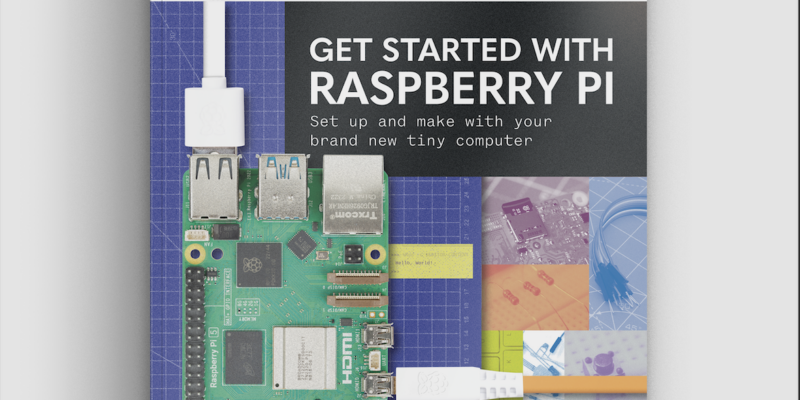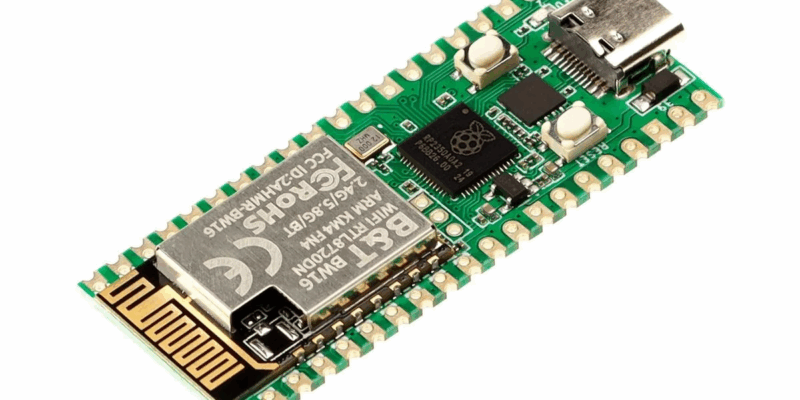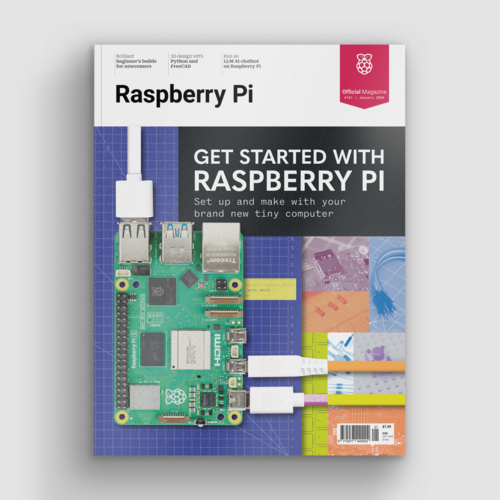Picoth two-factor authentication device
By Rosemary Hattersley. Posted

With a self-described “young and curious mind”, maker Angainor is a veteran of Raspberry Pi projects ranging from routers and home automation to retro gaming and time-lapse photography. There are “so many projects out there, you just want to buy 50 Raspberry Pi [boards] and build them all,” he enthuses. Rattling off his list of previous builds, he declares, “I’m bound to have forgotten some of them.” When Raspberry Pi announced Pico, its new microcontroller, he knew the time had come to create Picoth, a tiny security device he’d use all the time.
Advertisement
Get started with Raspberry Pi – everything you need to know to start your journey!
Simple security
Picoth is a “small USB keypad with RGB buttons and a nice colour TFT screen. Just plug it in and you get a powerful authentication assistant that will type in your 2FA (two-factor authentication) codes for you. You can store up to ten codes per page, with any number of pages you need,” making it ideal for online banking, GitHub, Twitter, and messaging platforms. Rather than having to unlock the phone, open the authenticator app, scroll to find the code, then type it in within a few seconds, Angainor says Picoth is set up with one touch to display the code with its label and one touch to auto-type it. Furthermore, the screen displays the remaining time, since 2FA codes change every 30 seconds.

“This first goal of the project was to have something I feel the need for every single day: a small and trustable device that can keep my various 2FA authentications safe and always at hand,” says Angainor of why he created Picoth. Raspberry Pi Pico “handles the hardware – a 4×4 matrix keypad and its 16 RGB LEDs, the 240×135 TFT colour screen, and a clock module – as well as all the software: code generation, USB_HID emulation, and animations”.
With experience using Python on other microcontrollers, Angainor jumped at the chance to do the same with a Raspberry Pi one. “I just love Python’s expressiveness and compactness, and it’s so seamless to prototype with.” He likes Pico because it boots in a couple of seconds, is very affordable, and hardware vendors had extensions and packs available as soon as Pico went on sale. He chose Pimoroni’s “intelligent” multifunction Keypad Base, having tried to create a similar device using the firm’s Keybow.
Tricky code words
For Picoth, he says the “fun thing was parsing the official documents to check the flexible GPIO features, and what pins could be routed to I2C and SPI ports.” Having connected Pico to the display and keypad, he set about coding using MicroPython and Pimoroni libraries. He compiled everything himself as the Pimoroni firmware lacked the SHA-256 and SHA-1 he needed, editing the display library code since the pins were hard-coded. He got his device to work but hit a snag (see magpi.cc/harshdecision) relating to the USB input devices. It meant the device couldn’t type the code itself. “While usable, this was a serious drawback” and prompted a move to CircuitPython which is slower but has built-in USB-HID support.

The change meant “significant changes and added constraints” to his plans. Getting the keypad and display to work together was perhaps the biggest hurdle in the project but, as ever, the Raspberry Pi community came up trumps: “an awesome library by Sandy Macdonald, targeting a keybow2040, that was a perfect fit for the keypad,” says Angainor. He also notes that Raspberry Pi and Python’s ecosystems were what made the project possible at all, turning things into a matter of deciding how to assemble the parts. “There were some hacks needed because some items were not to be used that way, but that’s part of the fun.”
Rosie has worked for consumer tech titles such as PC Advisor, Computeractive, CNET and Macworld and written For Dummies books on using iPads, Androids and tablets
Subscribe to Raspberry Pi Official Magazine
Save up to 37% off the cover price and get a FREE Raspberry Pi Pico 2 W with a subscription to Raspberry Pi Official Magazine.
More articles

Get started with Raspberry Pi in Raspberry Pi Official Magazine 161
There’s loads going on in this issue: first of all, how about using a capacitive touch board and Raspberry Pi 5 to turn a quilt into an input device? Nicola King shows you how. If you’re more into sawing and drilling than needlework, Jo Hinchliffe has built an underwater rover out of plastic piping and […]
Read more →

Win one of three DreamHAT+ radars!
That’s right, an actual working radar for your Raspberry Pi. We reviewed it a few months ago and have since been amazed at some of the projects that have used it, like last month’s motion sensor from the movie Aliens. Sound good? Well we have a few to give away, and you can enter below. […]
Read more →

RP2350 Pico W5 review
It’s Raspberry Pi Pico 2, but with a lot more memory
Read more →
